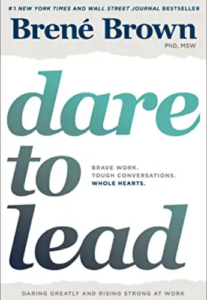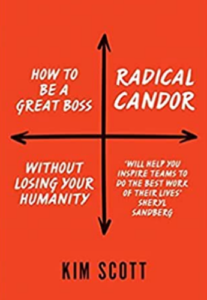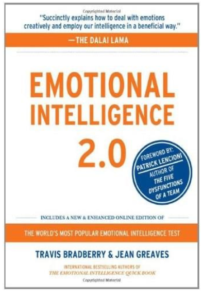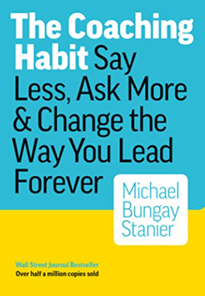
The 20 Best Leadership Development Books
In the ocean of some 50,000+ leadership books, it’s all too easy to get lost trying to decipher which are actually the most useful. Which books will best give your leaders that competitive edge? Which would be the most engaging? And, which would make the biggest difference for their teams and their greater organization?
In this article, we look at 19 of the absolute best leadership development books. Our list isn’t just based on our opinion or on book sales. It’s based on:
- The data from our LEADx library of hundreds of book summaries.
- Demand from clients and from our community of hundreds of leadership development professionals.
- The expertise of our coaches and facilitators.
- Books that are so impactful they have leadership development programs built around them.
This list is more than just a list of titles. We offer quick descriptions of each book to help you parse through the books that will have the highest impact for your specific leaders at your specific organization.
“Today a reader, tomorrow a leader.” – Margaret Fuller, American Journalist
The List: 20 Best Leadership Development Books
- The Oz Principle: Getting Results Through Individual and Organizational Accountability defines accountability as “a personal choice to rise above one’s circumstances and demonstrate the ownership necessary for achieving desired results to See It, Own It, Solve It, and Do It.” It’s full of practical advice on how leaders and organizations can achieve their best possible results by taking ownership of their work and holding themselves to their highest possible standard.

- Innovating Leadership Development Magazine is a magazine devoted to the strategy, tactics, and ideas behind leadership development. Each edition is chock-full of case interviews with cutting-edge leadership development professionals, thought pieces, and original research.
Download and subscribe for free here.
- The Energy Bus: 10 Rules to Fuel Your Life, Work, and Team with Positive Energy is a fable-based book that offers ten essential rules that will help you create positive energy and use it to drive your life, work, and relationships. The book offers insightful and actionable steps you can take to cultivate a positive attitude, create a vision for your life and team, and overcome the inevitable challenges you’ll face along the way.

- Influence without Authority is the perfect book for emerging leaders and individual contributors. It shows you the political and collaborative skills that you need to wield influence without necessarily coming from a position of power or authority. Even leaders often find themselves in positions where they don’t have authority (i.e., cross-functional collaboration, collaboration with peers, and requests to their bosses).

- Grit is about the “special blend of passion and persistence” that author and psychologist Angele Duckworth calls “grit.” Duckworth draws on the existing body of research around grit, her own research on grit, and her interviews with dozens of high achievers to show leaders how they can grow their grit.

- Speed of Trust is all about the practicality of leveraging trust. The more trust, the faster and more flexibly people can move. For leaders, trust frees up time and enables their teams to build better relationships, get more done, innovate, and grow more quickly.

- How Women Rise helps women identify twelve common, self-defeating behaviors that hold them back. The twelve behaviors: “Reluctance to claim your achievements,” “expecting others to spontaneously notice and reward your hard work,” “overvaluing expertise,” “building rather than leveraging relationships,” “Failing to enlist allies from day one,” “putting your job before your career,” “the disease to please,” “the desire to be perfect,” “speaking while emotional,” “minimizing,” “ruminating,” and “letting your radar distract you.”

- Dare To Lead. Professor and researcher, Brené Brown, shows leaders how to have the courage necessary to lead a great team—and all that this entails. Drawing on her extensive research on courage, vulnerability, shame, and empathy, she gets into what exactly it takes to be a courageous leader. She covers four skill sets that leaders can practice and improve to be more courageous: 1) rumbling with vulnerability, 2) living into our values, 3) braving trust, and 4) learning to rise.

- Radical Candor. Kim Scott is known for her hot take that, “If you can’t be radically candid with your employees, the second best thing you can do is be an asshole.” Scott writes about how leaders can communicate better and give feedback more effectively. As this review from HR Books so eloquently puts it, “Tough but tender. Direct but compassionate. Radical Candor isn’t about giving negative feedback, and it’s not about saying what’s on your mind. Instead, Kim wants you to take a stand in your employee’s development and speak about performance and growth with integrity and straightforwardness.”

- The Five Dysfunctions Of A Team. Patrick Lencioni makes the case that leaders need to address five key types of dysfunction in order to get their team all rowing in the right direction: 1) Absence of Trust 2) Fear of Conflict 3) Lack of Commitment 4) Avoidance of Accountability, and 5) Inattention to Results.

- How To Win Friends And Influence People. Dale Carnegie’s classic is a classic for a reason. It has helped countless people to communicate more effectively, increase their likeability, improve their productivity, get others to see their side, be more effective as leaders, navigate complex social situations, and much more.

- Future Tense. Psychologist Dr. Tracy Dennis-Tiwary draws on her years of research devoted to anxiety to point out how we tend to misunderstand this emotion. She reimagines and reclaims anxiety as a human-evolved advantage. She details how we can better use anxiety to our advantage. For leaders who face a lot of stress and anxiety, this book can help them fundamentally shift their mindset toward something more positive and productive.

- Crucial Conversations. The authors present a series of tips to handle high-stakes conversations. Leaders who shy away from important, difficult, and high-stakes conversations are putting themselves at a severe disadvantage. This book shows leaders how to stand strong through these important conversations, and how to approach them as effectively as possible.

- The Untethered Soul. This book helps leaders turn inward and explore their own thoughts, feelings, and consciousness. Of all the leadership books out there, this is one of the more philosophical and spiritual takes on leadership, delving into the idea of ego and how leaders can succeed by learning to untether themselves from their ego.

- The Seven Habits of Highly Effective People. Stephen R. Covey’s book offers a series of practical principles people can follow to be more productive, build better relationships, and hone in on the most important priorities. The habits include: 1) Be proactive, 2) begin with the end in mind, 3) put first things first, 4) think win-win, 5) seek first to understand, then to be understood, 6) synergize, and 7) sharpen the saw.

- Mindset. World-renowned Stanford psychologist Carol Dweck shows leaders how to adopt a growth mindset, where challenges and failures become opportunities to learn and grow. Dweck gets into the difference between a fixed mindset (where you believe abilities are rigid and unchanging) and a growth mindset (where you believe your abilities can be improved and developed).

- Emotional Intelligence 2.0. Our Chief People Scientist, Dr. Travis Bradberry, and Dr. Jean Greaves break down the four core skills of emotional intelligence: self-awareness, self-management, social awareness, and relationship management. These skills are also powerful skills for leaders to improve their performance.

- The Coaching Habit by Michael Bungay Stanier. In this book, Bungay Stanier breaks down the seven key questions you can ask during meetings and conversations to adopt the mindset of a coach. He shows how these questions and their variations can be applied to make coaching a habitual part of your style of interaction; not just in one-on-ones or moments of “coaching.” By making these questions habitual, you can improve your entire conversational approach.

- Coaching For Performance by Sir John Whitmore. Sir John Whitmore is a 2nd baronet, a former racecar driver, and most importantly, an absolute pioneer in the world of executive coaching. In this book, Whitmore introduces the GROW model to coaching, which leaders can apply to have more productive, effective conversations with their employees.
Goal: Figure out what the other person wants out of this conversation.
Reality: Get specific about the other person’s plan. Ask questions using “what, where, who, when.” Stay out of the other person’s way.
Options: People get stuck. Try to help them open their minds w/ questions like “If you had a magic wand, what would you do?”
Will: Ask “What will you do?” They should have a clear course of action by this point. The second “will” at play is their “will” to act. They should be motivated to act by this point.
Purchase the book here.
- The Advice Trap by Michael Bungay Stanier. In this book, Bungay Stanier shows the number one trap we all can’t help but fall for as leaders: the advice trap. We all tend to give advice and try to solve problems. But, we don't realize that our advice is often less informed and useful than we think. In this book, he shows you how to break free from advice-giving. Instead, he shows you how to ask good questions and shift your mentality toward supporting others.
Purchase the book here.
The Best Leadership Development Books Help Foster The Best Leaders
Making great books and book summaries available to your leaders is a powerful way to help cultivate a culture of learning. Add these best leadership development books to your training programs or library, and you'll be well on your way.
Enjoy this list of leadership development books? Check out our list of names for leadership development programs.


























